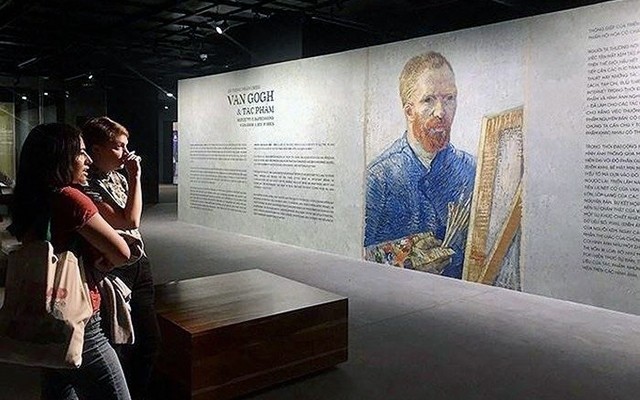It can be seen that the Industry 4.0’s achievements have changed key factors in fine arts, photography and exhibition, including the methods of creating and marketing to the public as well as copyright issues for artists. Differing from the past, artists now do not need a workshop or materials to create art but they can do it on their laptop and use additional support from technology to add more visual and lighting effects to their works.
3D printing technology, virtual reality and digital art have also contributed to the changes in the way the public enjoy art. Thanks to the internet, people can still keep track of exhibitions, even taking part in the art creation process.
The internet and social networks have helped to form an online art market which directly connects art-lovers with every artist or trading platform. Several fine arts pages have been established on Facebook, attracting dozens of thousands of members and having successfully hosted online auctions, namely Vietnam Art Space, Vietnam Art Now, All about Art and Artist, and Chi Art Space.
Modern technology has also been utilised in the conservation, restoration and editing of fine art and photography; many art works are even composed by artificial intelligence.
Recently, more and more projects, exhibitions, artworks using digital technology have been introduced in Vietnam, including the "Into Thin Air" project by Manzi Art Space in 2016; augmented reality exhibitions in 2018 at French Cultural Institute in Vietnam (L'Espace), and the “Reflective Impressions: Van Gogh and his works” exhibition by the Vincom Center for Contemporary Arts (VCCA) in March this year. All of these projects utilise technology applications to allow visitors to have a more lively experience to enjoy the works on display.
Dr. Tu Manh Luong, Director of the Science, Technology and Environment Department under the Ministry of Culture, Sports and Tourism, noted that although the Industry 4.0 poses remarkable impacts on fine arts, photography and exhibition, most of the cultural managers have not yet had a clear understanding about the positive and negative impacts as well as opportunities and challenges brought about by new technologies.
In addition, he acknowledged the absence of specific policies targeting the Industry 4.0 as well as well-qualified human resources who can take advantage of technology to promote creativity.
Although there are thousands of artists currently operating in various fields of arts, including painting, design, sculpture and applied art, few of them have proper understanding of science and technology and its achievements, thus they have not yet fully recognised how new technologies can benefit their products and services.
As a lecturer at the Graphics Faculty at the Vietnam University of Fine Arts, Associate Prof., Dr. Nguyen Nghia Phuong said that the development of technology has required innovations in training programmes and methods for students. After graduation, learners are required to be proficient in web design software and tools in art creation process, such as Dreamweaver, Flash, and Engine Web3D.
The robust development of information technology and the internet also raises further attention in the protection of Intellectual property rights due to the more rapid and open sharing of artworks in the digital era. In the context of cases of copyright infringement in photography is now becoming more alarming, artists and cultural managers must be aware of the problematic issue.
















